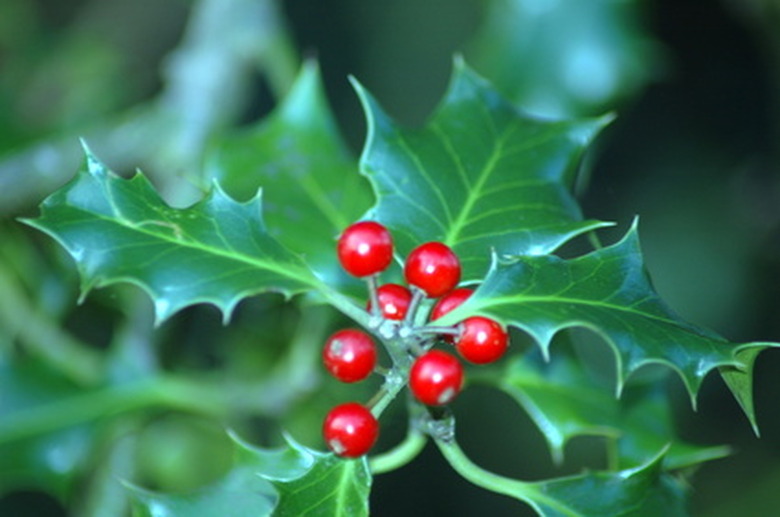Holly Bushes & Deer
To foraging deer, nothing says Christmas like a mouthful of holly. Then again, hungry deer still assert their food preferences whenever they can. The Ilex, or holly, plant family serves as an excellent example of the varietal choices gardeners can made to obtain a certain landscaping look or feel without losing plants to predators. Some hollies are well-known deer favorites at all times; others are quite resistant to deer foraging.
Elements of Deer Resistance
With respect to almost all plants, several common characteristics seem to boost resistance to deer foraging. Texture is important: plants with thorns, prickles or even fuzzy flowers or leaves seem lower in deer preference than smooth-textured plants. While we notice holly mostly for its berries, flowers of some varieties seem quite noticeable (those on English holly, for example), and during their blooming season they are both fluffy and apparently full of pollen; their general fuzziness may serve as a repellant quality. Taste is an imponderable, but USDA plant profiles clearly include observations of animal consumption and frequently palatability ratings.
- To foraging deer, nothing says Christmas like a mouthful of holly.
- Some hollies are well-known deer favorites at all times; others are quite resistant to deer foraging.
Resources for Choosing Resistant Plants
Ilex varieties growing in the US number approximately 20, including both natives and imports. Southern varieties include a deciduous holly (possumhaw), and some varieties (inkberry and larger gallberry) have berries that are not red, but all ilexes described possess dark green leaves and berry clusters of some kind, meeting very general holly parameters. The USDA lists ilexes throughout the US. Rutgers University Extension Services' large study of deer-resistant plants overlaps moderately with the USDA list.
Rutgers' Standards
The Rutgers study focuses on landscape plants for lawn and garden. The list, therefore, focuses on what is nationally and most often commercially available to gardeners. (This could account, therefore, for varietal names like "Nellie Stevens" and "John T. Morris.") The Rutgers list includes Chinese, Japanese, English, and American hollies, along with a few native varieties, such as inkberry. The list is easy to use, color-coded for reported resistance, ranging from red (frequently severely damaged by deer) through orange and yellow to green (rarely damaged).
- Ilex varieties growing in the US number approximately 20, including both natives and imports.
- The Rutgers list includes Chinese, Japanese, English, and American hollies, along with a few native varieties, such as inkberry.
USDA Criteria
The USDA list includes a wider range of native hollies, especially those from the southern US. Forage palatability is general, rather than restricted to deer only. Photos of most varieties are included, along with information about other dangers to plant health in addition to animal damage. Users are left to wonder quietly how information on holly palatability to humans data were obtained.
Choosing Holly Varieties
Consult both lists, your County Extension service and local nurseries for the best information on vulnerability of holly varieties to deer in your area. Both the USDA and County Extension may have additional pertinent regional information. Ilex montana (winterberry), for example. may be a wonderful plant choice in some areas but it is currently classified as Endangered in the states of Massachusetts and New Jersey. Of further interest is a notation that winterberry is "Exploitably Vulnerable" in the state of New York, highlighting the interconnections among consumers and their environment and reinforcing the dangers of human foraging in nature.
- The USDA list includes a wider range of native hollies, especially those from the southern US.
- may be a wonderful plant choice in some areas but it is currently classified as Endangered in the states of Massachusetts and New Jersey.
